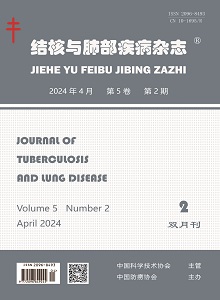Objective To analyze the drug resistance of tuberculosis (TB) in Dalian from 2012 to 2018.Methods Based on China Information System of Disease Prevention and Control, a total of 5512 TB patients newly registered with smear-positive and sputum culture (modified Roche culture method) were collected from TB Information Management System in Dalian from 2012 to 2018. Among these patients, 5241 (95.1%) patients with positive culture were subjected to strain identification and anti-TB drugs sensitivity test (referred to as “drug susceptibility test”). Finally, 5050 strains of Mycobacterium tuberculosis (MTB) (96.4%, 5050/5241) and 191 strains of non-tuberculosis mycobacteria (NTM) (3.6%, 191/5241) were obtained. The drug resistance of the strain identified as MTB was analyzed based on drug susceptibility test results. SPSS 12.0 software was used to conduct Chi-square test or Chi-square trend test on the counting data or the annual drug resistance rate, and the linear regression equation was used to verify the drug resistance rate, multidrug resistance rate, year and the situation of the initial treatment or the retreatment. P<0.05 was considered as a statistically significant difference.Results The total drug resistant rate, total multidrug resistant rate, drug resistant rate of the initial treatment, multidrug resistant rate of the initial treatment, resistant rate of the retreatment, and multidrug resistant rate of the retreatment in Dalian were, respectively, 64.5% (223/346), 34.7% (120/346), 46.6% (34/73), 23.3% (17/73), 69.2% (189/273), and 37.7% (103/273) in 2012, while which were dropped to 24.0% (176/733), 6.7% (49/733), 19.0% (99/522), 4.8% (25/522), 36.5% (77/211), and 11.4% (24/211) in 2018, showing a significant downward trend ( =213.930, 223.357, 40.371, 49.536, 86.323, 66.990, all P values =0.000). The results of the linear regression equation showed that the total drug resistant rate, year and the condition of initial treatment and retreatment showed a decreasing trend (Presistance=0.000, Pmultidrug resistance=0.000). The total resistant rate of the 5050 strains to INH, RFP, Sm, Ofx, Km, EMB were, respectively, 19.2% (970/5050), 17.8% (900/5050), 8.9% (447/5050), 10.3% (521/5050), 4.8% (243/5050), and 2.5% (124/5050). There were 46 combinations of drug resistance in 1623 strains, including 6 kinds of single drug resistance, accounting for 45.3% (735/1623) of the total drug resistance spectrum, with the highest INH resistance (13.3%, 216/1623); 16 kinds of multidrug resistance (including extensive drug resistance), accounting for 36.8% (598/1623) of the total drug resistance spectrum, with the highest resistance to INH + RFP (13.3%, 216/1623); 24 kinds of multidrug resistance, accounting for 17.9% (290/1623) of the total drug resistance spectrum, with the highest resistance to INH + Sm (4.0%, 65/1623).Conclusion From 2012 to 2018, the total drug resistance rate and the total multidrug resistance rate of TB showed a significant downward trend in Dalian. The treatment and management of MDR-TB system exerts the remarkable prevention and control effects.

 Wechat
Wechat